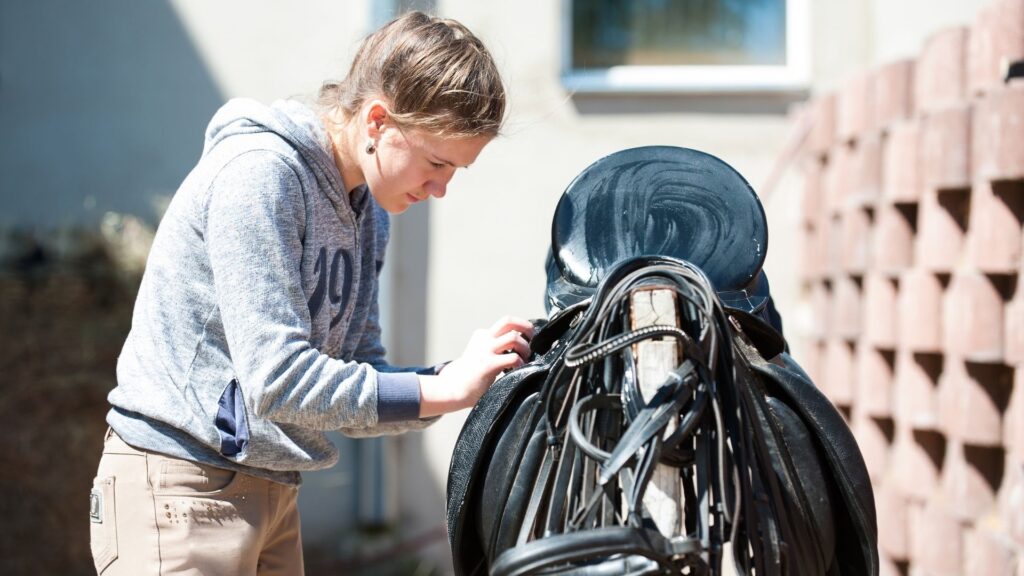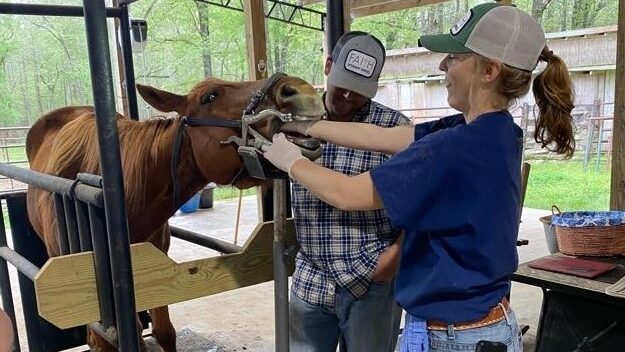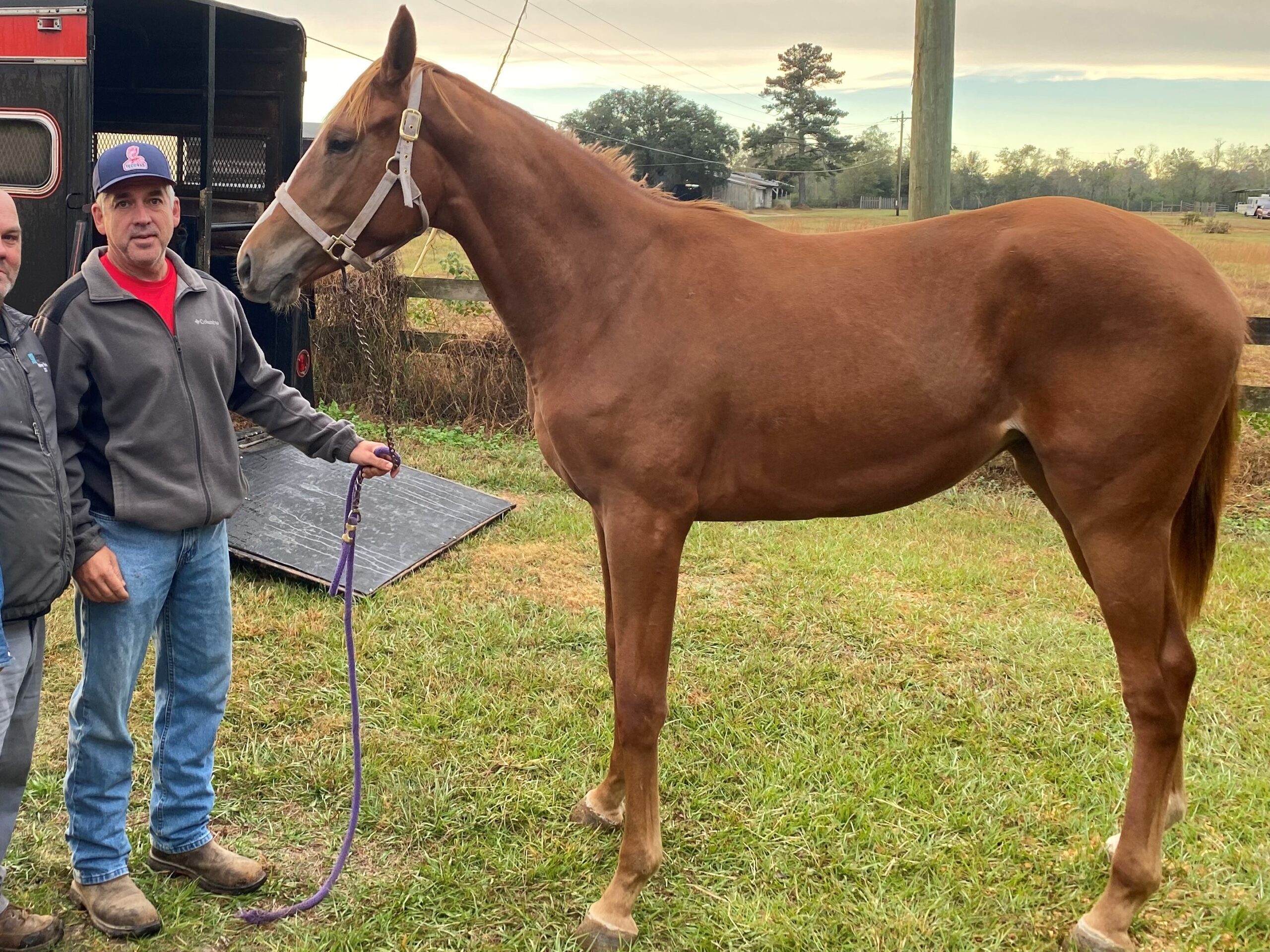Last updated: April 28, 2025
Any links on this page that lead to products on Amazon are affiliate links and I earn a commission if you make a purchase. Thanks in advance – I really appreciate it!
Owning a horse is a rewarding journey, but it comes with significant responsibilities. This guide provides a comprehensive horse care checklist broken into daily, weekly, and monthly tasks. Alongside practical tips, it includes engaging stories and helpful resources to make horse care easier and more enjoyable for new and experienced owners alike.

Daily Horse Care Tasks
Caring for your horse daily is the cornerstone of their health and well-being. By following a consistent routine, you can address their essential needs while building a stronger bond. Let’s dive into the key tasks for both morning and evening.
Morning Routine:
The morning is the perfect time to ensure your horse starts their day healthy and ready. Here’s what to include in your morning routine:
- Hydration and Nutrition:
- Provide fresh, clean water. Check for any debris or contamination in the trough. (Read about horse water intake)
- Feed your horse their morning hay or grain ration. (Feeding Horses Hay: What You Need to Know)
- Observe your horse’s appetite and manure. Changes could indicate health issues.
- Quick Once-Over:
- Visually inspect your horse for signs of injury, swelling, or discomfort.
- Check hooves for rocks or debris. (Hoof Care Tips)
- Brush off loose dirt or mud.
- Monitor for Early Signs of Illness
- Look for symptoms like lethargy, nasal discharge, or coughing that might signal the need for veterinary attention.
- Stable Keeping:
- Muck out stalls, removing manure and soiled bedding.
- Refresh water buckets or troughs.

Evening Routine:
Evenings are a good opportunity to check in with your horse again and ensure they end their day comfortably. Key tasks include:
- Repeat morning feeding and watering tasks.
- Observe your horse’s behavior and interactions with other horses.
- Check for any new injuries or signs of illness.
This is my normal daily routine, though I adjust it based on whether my horses are turned out, kept in a paddock, or stall-kept. Once the daily tasks are managed, it’s important to step back and consider the bigger picture. Weekly care builds on daily routines, tackling deeper maintenance needs like deep cleaning, grooming, and equipment inspection to ensure your horse thrives.

Weekly Horse Care Tasks
While daily care ensures your horse’s immediate needs are met, weekly tasks address their deeper maintenance and well-being. These activities help keep your horse healthy, your equipment functional, and your barn in top condition. Here’s how I approach weekly care:
Deep Cleaning
- Strip stalls completely and replace with fresh bedding.
- Clean and disinfect water troughs.
Grooming Time
- Thoroughly groom your horse, including mane and tail care. Step-by-Step Grooming Guide
- Check for skin irritations or parasites.

Tack Inspection
- Clean and condition saddles, bridles, and halters.
- Inspect tack for wear and tear; repair as needed.
Exercise Variety
- Mix up routines with lunging, trail rides, or groundwork. Horse Training Basics
Parasite Control
- Check for signs of external parasites like ticks or lice during grooming.
- Rotate grazing areas to limit parasite exposure.
- Monitor your deworming schedule and consult your vet for the best rotation practices.
In South Louisiana, I’ve found parasite management to be especially important due to the warm climate. Regular inspections and a proactive approach to deworming have kept my horses healthy. Weekly tasks maintain your horse’s health and detect issues early.
Now, let’s move on to the monthly care routine, where we focus on professional attention and long-term health monitoring.

Monthly Horse Care Tasks
Caring for your horse on a monthly basis involves stepping back to evaluate their overall health and well-being, maintaining equipment, and planning ahead for their needs. These tasks are vital for long-term health and performance.
Professional Care
- Vaccinations: Keep your horse up to date with core vaccines such as tetanus, Eastern/Western encephalomyelitis, rabies, and West Nile virus. Collaborate with your veterinarian to create a vaccination schedule tailored to your region and your horse’s risk factors.
- Deworming: Use a targeted approach based on fecal egg counts to address specific parasites and avoid resistance. Adjust your plan seasonally or as recommended by your vet. Learn more about parasite control.
- Dental Care: Schedule dental exams to check for sharp points, which can hinder chewing and digestion. Floating teeth (filing) helps ensure your horse eats comfortably and maintains weight.
- Tip: Watch for signs like dropping feed, reluctance to eat, or tilting the head while chewing.
- Personal Insight: “I had a mare that started losing weight and dropping grain. A quick dental check revealed sharp edges on her teeth. Floating resolved the issue, and she returned to her usual appetite and health within days.”
- Farrier Visit: Plan regular hoof trimming or shoeing every 6–8 weeks. Consistent farrier care prevents lameness and supports hoof health. Farrier Tips.
Tack Maintenance
- Conduct a thorough inspection of saddles, bridles, and other tack for wear and tear. Repair or replace damaged items promptly to avoid safety risks.
- Clean and oil leather tack to preserve its durability and longevity. This routine also enhances comfort for your horse.
Dietary Review
- Evaluate your horse’s diet, including forage, grain, and supplements, to ensure it aligns with their weight, activity level, and overall health. Adjust portions or add supplements as necessary.
Health Check
- Monitor your horse’s weight and body condition regularly. Learn how to measure your horse’s weight.
- Schedule routine veterinary check-ups for vaccinations, dental care, and deworming. Consult reputable resources like the American Association of Equine Practitioners (AAEP) for additional guidance.
Building on monthly routines, advanced care practices address the demands of changing seasons and unique challenges, ensuring your horse’s health and well-being year-round.

Advanced and Seasonal Care
Advanced care practices extend your horse’s regular routines to address the demands of changing seasons and performance needs. Whether managing winter’s chill or summer’s heat, these tailored strategies ensure your horse stays healthy and comfortable in any condition.
Winter Care
Winter care requires thoughtful adjustments to keep your horse warm, well-fed, and hydrated despite freezing temperatures and reduced pasture access.
- Blanketing: If your horse has a clipped coat or struggles to maintain weight in cold weather, a properly fitted blanket is essential. Learn how to choose and fit a winter blanket.
- Feeding Adjustments: Increase forage to provide extra calories for warmth, as digestion generates body heat.
- Hydration: Ensure water is not frozen and stays at a drinkable temperature. Heated water buckets or trough heaters can help. Learn more about Winter Horse Care.
Note: Mud management is critical during wet seasons to prevent hoof issues like thrush. Regular hoof cleaning and using hoof conditioners can help.
Summer Care
Hot weather can be taxing on horses, especially during intense exercise or turnout in sunny pastures. Prioritize these tasks:
- Fly Control: Use fly masks, sprays, and strategically placed fly traps to keep your horse comfortable. Explore effective fly control strategies.
- Shade and Ventilation: Provide access to shaded areas or well-ventilated shelters during peak sun hours.
- Hydration Management: Monitor water intake closely, as dehydration risk increases in hot weather. Adding electrolytes to your horse’s diet can also help maintain balance.

Performance Horse Care
If your horse competes or works regularly, their care requires specialized attention to maintain peak performance and recovery. Here’s how tailored strategies can make a difference:
Customized Nutrition
Performance horses burn more calories and require higher levels of protein, vitamins, and minerals to sustain energy and muscle recovery. I once had a sprinter struggling to maintain energy through training. By consulting with an equine nutritionist, I adjusted her diet to include a performance-focused feed rich in amino acids and omega-3 fatty acids.
Within weeks, her stamina improved significantly, and she performed better in her next race. Consult your veterinarian or equine nutritionist to create a tailored diet that supports your horse’s endurance and joint health.
Recovery Strategies
- Provide rest days between intense workouts or competitions to allow muscle repair and prevent overtraining.
- Use therapeutic tools, such as cold hosing, liniments, or poultices, to reduce inflammation and soothe muscles after strenuous activities.
- Consider regular massages or stretching exercises to enhance flexibility and minimize soreness.
Preventive Measures
- Schedule frequent farrier visits to maintain proper hoof balance, crucial for reducing strain on joints during high-impact activities.
- Monitor your horse for early signs of fatigue or discomfort, such as changes in stride or reluctance to work, and address these promptly with rest or professional evaluation.
By tailoring nutrition, recovery, and preventive care to your horse’s performance demands, you can keep them healthy, competitive, and ready for their next challenge.

Horse Care Checklist
To make horse care even easier, download our visually appealing checklist. This resource includes:
- A clear, easy-to-read structure, dividing tasks into daily, weekly, and monthly routines.
- A customizable template to add your own notes and adapt tasks for your horse’s specific needs.
You can print it out or edit digitally to create a personalized care plan!

Conclusion
Consistency is key to effective horse care. Following a regular routine not only ensures your horse’s physical health but also strengthens your bond. By incorporating these simple yet essential practices, you’ll enjoy a thriving partnership with your horse.
Call to Action:
- Share Your Routine: How do you organize your horse care routine? Share your tips and experiences in the comments below!
- Download the Checklist: Simplify your horse care tasks with our customizable checklist. Click here to download the checklist and create a personalized plan for your horse’s needs.
- Stay Connected: Subscribe to our newsletter for expert horse care tips, practical advice, and engaging equine stories delivered straight to your inbox.

About the Author: Miles Henry
Lifelong Horseman | Racehorse Owner | Published Author
Miles Henry brings over 25 years of hands-on experience training and owning Thoroughbred racehorses. Raised with Quarter Horses and Appaloosas, he’s spent a lifetime learning from horses—on the track, in the barn, and in the field. Today, he runs a small but successful racing stable in Louisiana and shares real-world insights on HorseRacingSense.com, helping horse owners, fans, and bettors navigate the sport with confidence.
📚 Books: View Miles’s books on Amazon »
🎧 Podcast Guest: Animal Tales Ep. 32 |
YouTube Interview
📩 Newsletter: Sign up for racing tips and horse care advice »
🔗 Follow Miles:
Twitter |
Facebook |
YouTube

